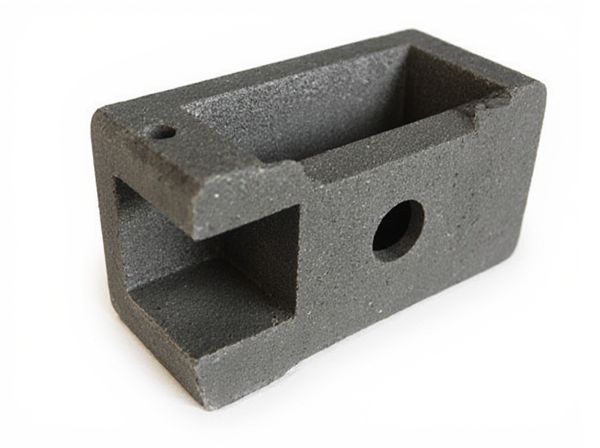
Photo illustration: Closed Deck Block vs Open Deck Block
Closed deck blocks offer enhanced structural rigidity and improved cooling efficiency by surrounding the cylinders entirely with metal, reducing block distortion during high-performance driving. Open deck blocks provide better coolant flow around the cylinders, aiding heat dissipation and making them lighter and easier to manufacture. Your choice depends on whether you prioritize engine strength or optimal cooling performance.
Table of Comparison
| Feature | Closed Deck Block | Open Deck Block |
|---|---|---|
| Structure | Solid top with reinforced cylinder walls | Open space around cylinders for coolant flow |
| Strength | Higher rigidity, better for high-performance engines | Less rigid, more prone to flex under high stress |
| Cooling Efficiency | Lower coolant circulation, can run hotter | Better coolant flow, improved heat dissipation |
| Weight | Heavier due to thicker walls | Lighter design with less material |
| Common Use | Performance and racing engines | Standard passenger and economy vehicles |
| Cost | More expensive to manufacture | More cost-effective for mass production |
Introduction to Engine Block Designs
Closed deck blocks feature reinforced cylinder walls connected by an unbroken deck surface, enhancing strength and rigidity for high-performance engines. Open deck blocks have open spaces around the cylinder sleeves, allowing better coolant flow but sacrificing some structural integrity. These fundamental design differences impact engine durability, cooling efficiency, and suitability for various applications.
What is a Closed Deck Block?
A closed deck block features a cylinder block design where the area around the cylinders is fully enclosed, providing enhanced structural rigidity and minimizing cylinder distortion under high-pressure conditions. This design improves engine durability and is commonly used in high-performance and heavy-duty engines to handle greater stress and demands. Unlike open deck blocks, the closed deck configuration supports better cooling control by restricting coolant flow around the cylinders, which helps maintain engine stability at elevated temperatures.
What is an Open Deck Block?
An open deck block is an engine design where the cylinder walls are not fully enclosed by the engine block, allowing coolant to flow freely around the cylinders for improved heat dissipation. This design enhances cooling efficiency, reduces engine weight, and facilitates easier manufacturing compared to a closed deck block. Open deck blocks are commonly used in high-performance and mass-produced engines where optimal thermal management is crucial.
Structural Differences: Closed Deck vs Open Deck
Closed deck blocks feature a solid cylinder wall that enhances engine rigidity and reduces cylinder deformation under high pressure, improving durability and performance. Open deck blocks have space around the cylinders allowing better coolant flow and improved heat dissipation, which is advantageous for engine cooling. The structural difference lies in the solid support of closed decks versus the ventilated design of open decks, affecting thermal management and strength.
Performance Implications of Each Block Type
Closed deck blocks offer enhanced structural rigidity and superior heat dissipation, which translates to improved engine durability and better performance under high-stress conditions such as racing or heavy towing. Open deck blocks provide better coolant flow around the cylinders, leading to more efficient engine cooling and potentially longer engine life in everyday driving scenarios. The decision between closed and open deck designs impacts engine reliability, thermal management, and suitability for specific performance requirements.
Cooling Efficiency: Open Deck vs Closed Deck
Open deck blocks offer superior cooling efficiency by allowing coolant to flow freely around the cylinder barrels, enhancing heat dissipation. Closed deck blocks feature a solid deck surface with limited coolant flow paths, which reduces cooling performance but improves structural rigidity. Engines designed for high-performance or heavy-duty applications often favor closed deck blocks despite their lower cooling efficiency due to increased strength.
Durability and Strength Considerations
Closed deck engine blocks offer enhanced durability by providing increased rigidity and minimizing coolant leakage, making them ideal for high-performance and heavy-duty applications. Open deck blocks, while lighter and easier to cool due to increased coolant flow around the cylinders, typically sacrifice some structural strength, which can affect long-term durability under extreme stress. Choosing between the two depends on the balance needed between strength, weight, and cooling efficiency for specific engine requirements.
Suitability for High-Performance Applications
Closed deck blocks offer enhanced rigidity and improved structural integrity, making them highly suitable for high-performance engines that demand increased cylinder support under extreme conditions. Open deck blocks provide better cooling efficiency due to increased coolant flow around the cylinders but sacrifice some strength, rendering them less ideal for high-stress, high-horsepower applications. The choice between closed and open deck designs ultimately depends on balancing performance requirements with thermal management needs.
Common Uses and Manufacturer Preferences
Closed deck blocks are commonly used in high-performance and heavy-duty applications where enhanced rigidity and improved stress resistance are critical, favored by manufacturers of trucks and performance vehicles for their superior strength. Open deck blocks allow better cooling flow and are preferred by manufacturers focusing on cost efficiency and improved thermal management, often found in passenger cars and everyday vehicles. Automotive manufacturers select closed deck blocks for durability under high loads, while open deck designs are chosen for lighter vehicles requiring efficient temperature control.
Choosing the Right Engine Block for Your Needs
Closed deck blocks offer increased strength and rigidity by fully enclosing the cylinder walls, making them ideal for high-performance and forced induction engines. Open deck blocks provide better cooling and lighter weight, suitable for naturally aspirated or daily-driven applications where heat dissipation is a priority. Selecting the right engine block depends on balancing durability requirements, cooling efficiency, and intended vehicle use.
 caratoz.com
caratoz.com